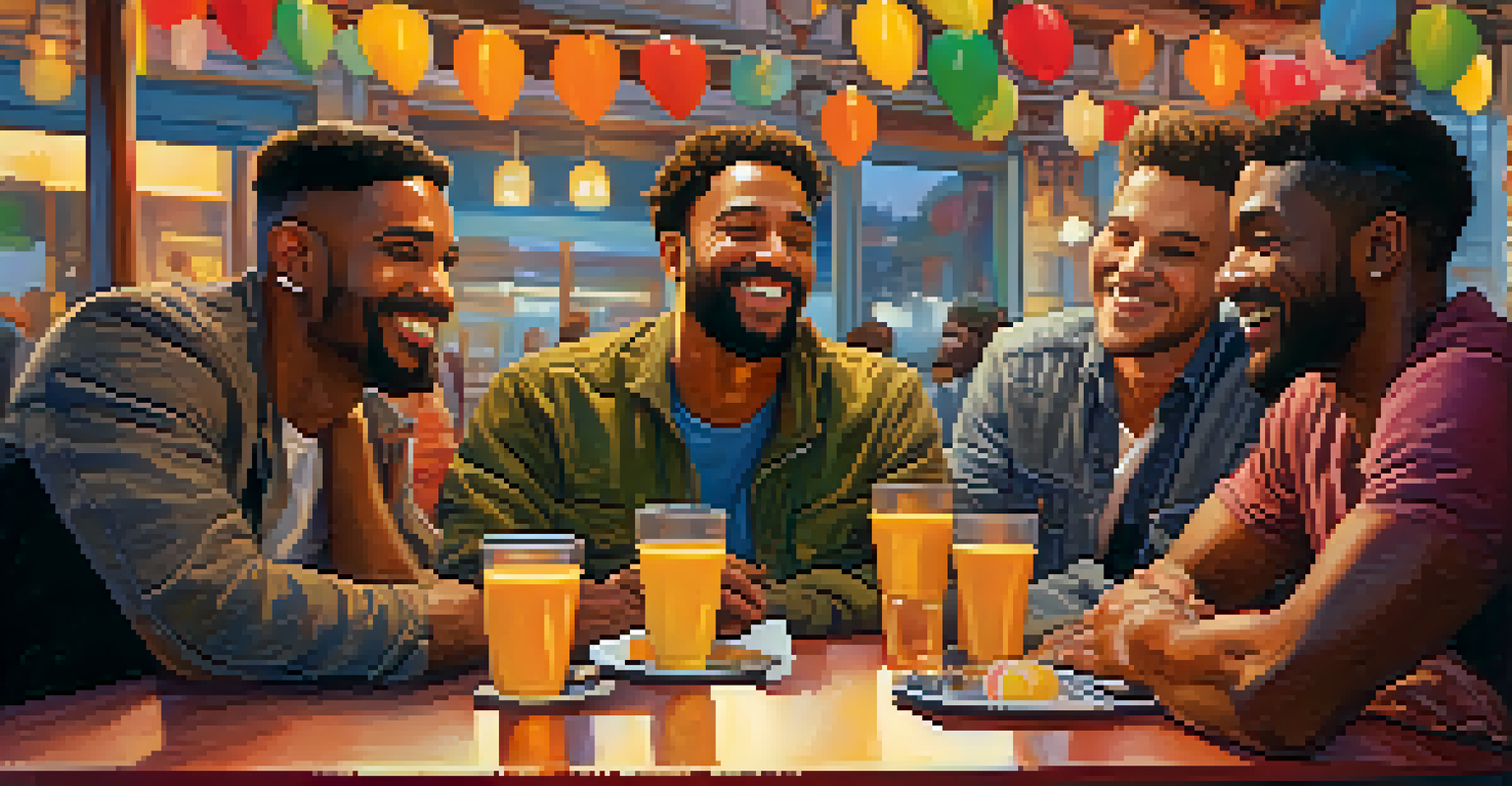Challenging the Norm: Male Characters Defying Traditional Roles

Breaking Stereotypes: The Evolving Male Archetype
In literature and film, male characters have traditionally been portrayed as stoic, dominant, and emotionally detached. However, recent narratives are redefining these stereotypes, showcasing men who embrace vulnerability and emotional depth. This evolution reflects a broader societal shift towards accepting a wider range of masculinities.
The greatest way to live with honor in this world is to be who we pretend to be.
Take, for example, the character of Atticus Finch from 'To Kill a Mockingbird.' He embodies strength not through physicality but through moral conviction and compassion. Such portrayals encourage audiences to reconsider what it means to be strong and how emotional intelligence plays a vital role in masculinity.
Ultimately, challenging these norms not only enriches storytelling but also promotes healthy expressions of masculinity, allowing men to relate to characters on a more personal level.
The Sensitive Hero: Redefining Strength
Traditionally, heroes have been depicted as rugged and self-reliant, but the 'sensitive hero' is emerging as a compelling alternative. Characters like Samwise Gamgee from 'The Lord of the Rings' show that strength can come from loyalty, empathy, and the willingness to support others. This portrayal resonates deeply with audiences who value emotional connection over brute strength.

The sensitive hero often faces internal struggles, which makes them relatable and human. By showcasing their vulnerabilities, these characters remind us that it's okay to express feelings and seek help when needed. This shift is crucial in promoting a more inclusive view of masculinity that values emotional health.
Redefining Male Strength
Modern narratives are showcasing male characters who embrace vulnerability and emotional depth, challenging traditional notions of masculinity.
As viewers and readers engage with these narratives, they begin to see sensitivity as a form of strength, encouraging men to embrace their own emotional sides.
Father Figures: Challenging Traditional Parenting Roles
In many stories, fathers have been depicted as distant or authoritarian figures. However, contemporary narratives are showcasing fathers as nurturing and involved, breaking the mold of traditional parenting roles. Characters like Marlon Brando's Vito Corleone in 'The Godfather' display a blend of strength and tenderness, highlighting the complexity of fatherhood.
It is not the strongest of the species that survive, nor the most intelligent, but the one most responsive to change.
These representations challenge the notion that men must adhere to strict, stoic roles in parenting. Instead, they show that nurturing can be a powerful aspect of masculinity, allowing fathers to connect deeply with their children. Such portrayals help normalize the idea that emotional involvement is essential to effective parenting.
By reflecting the realities of modern fatherhood, these characters encourage society to embrace a more balanced view of parental roles, where emotional support is as vital as providing for a family.
The Anti-Hero: Complex Masculinity in Modern Storytelling
The rise of the anti-hero in popular culture represents a significant departure from traditional male leads. Characters like Walter White from 'Breaking Bad' and Tony Soprano from 'The Sopranos' embody flawed masculinity, showcasing the complexities of human nature. Their journeys force audiences to grapple with moral ambiguity and the consequences of toxic masculinity.
These anti-heroes often struggle with insecurities, leading to decisions that reflect their internal conflicts. Rather than presenting a straightforward hero's journey, these narratives delve into the darker aspects of masculinity, providing a more nuanced portrayal. This complexity fosters discussions about the expectations placed on men and the societal pressures they face.
The Rise of Collaborative Heroes
Contemporary stories emphasize the importance of teamwork among male characters, promoting the idea that strength comes from mutual support and relationships.
As viewers engage with these characters, they gain insight into the challenges of living up to traditional masculine ideals, promoting empathy and understanding in discussions around gender roles.
Collaborative Masculinity: Heroes Working Together
In contrast to the lone wolf archetype, many modern stories emphasize collaboration among male characters. Movies like 'The Avengers' illustrate how teamwork and cooperation are essential to overcoming challenges. These narratives highlight that strength does not solely come from individual prowess but also from the ability to work alongside others.
Collaborative masculinity encourages men to value relationships and mutual support. This shift reflects a growing recognition that teamwork can lead to greater achievements and more profound connections. By showcasing diverse male friendships, these stories reinforce the idea that camaraderie is a vital aspect of masculinity.
Ultimately, these narratives challenge the notion that men must face challenges alone, fostering a culture where collaboration is celebrated and emotional bonds are strengthened.
Male Vulnerability: Embracing Authenticity
The portrayal of vulnerability in male characters is gaining traction, challenging the long-held belief that men must always be strong. Movies like 'A Star is Born' depict male protagonists who confront their fears and insecurities, providing a refreshing take on masculinity. This authenticity resonates with audiences, encouraging men to express their emotions openly.
By showcasing vulnerability, these characters help dismantle the stigma surrounding mental health issues among men. They demonstrate that seeking help and sharing feelings is not a sign of weakness but a courageous step towards healing. This shift in perspective is vital for promoting emotional well-being in society.
Embracing Male Vulnerability
Portrayals of male vulnerability are growing, encouraging men to express their emotions openly and dismantling the stigma around mental health.
As more stories embrace male vulnerability, they pave the way for healthier conversations about masculinity, allowing men to feel empowered in being their true selves.
Conclusion: The Future of Masculinity in Storytelling
The landscape of storytelling is evolving, with male characters increasingly challenging traditional roles and expectations. By embracing vulnerability, sensitivity, and collaboration, these characters are reshaping our understanding of masculinity. This shift reflects a broader cultural movement towards inclusivity and acceptance, inviting men to explore their identities more freely.
As these narratives continue to emerge, they foster important conversations about gender roles and emotional health. The portrayal of multi-dimensional male characters not only enriches storytelling but also encourages societal progress by promoting diverse expressions of masculinity.

Ultimately, the future of masculinity in storytelling holds promise for creating more relatable and authentic characters, allowing audiences to engage with a more comprehensive understanding of what it means to be male in today's world.